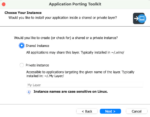Creating a flawless application that pleases all customers is much more complicated than traditional software, said Antoine Aymer, a mobile technologist at HPE. This is because the concept of user experience (UX) goes beyond a clean user interface and design.
Organizations need to address expectations of the user, like how usable is the application and is it fast enough. Companies should define a set of UX metrics that reveal something about the interaction, like some aspect of effectiveness, crash rate, conversion and abandonment rate, as well as time and taps to completion.
Delivering a great UX also means measuring the main aspects of a user experience. According to Aymer, the main aspects of UX include: functionality, suitability, performance efficiency, availability, security, usability, and portability.
Aymer said there are a set of discovery questions that companies can answer when they are trying to develop an application that hits all the main aspects of UX. For instance, “How do you make sure your app performs as expected,” and “how do you make sure your app is available and reliable,” are both questions companies should consider if they want to measure the user experience.
Poor UX directly affects the business
How do you make sure your app performs as expected? According to HPE’s research, this is a question companies must ask, since speed and latency matter tremendously.
According to a calculation from Amazon, a one-second delay in load time of a website could result in $1.6 billion in lost sales annually for the company. This example, according to Aymer, is linked to performance efficiency, and for applications that fail to address this, it’s more than possible that their users will not return.
In a 2016 “DevOps, APM, and Digital User Experience” report from HPE, problematic applications immediately create a poor user experience. 80% of those surveyed stated they would only attempt to use an application with issues three times or fewer. And, 15% would only retry an application once, while 6% said they wouldn’t give the application a second chance. After reviewing how respondents would react to a problematic application, HPE determined that in order to deliver an excellent user experience, organizations need to measure the app’s ability to deliver value and its capability to meet user’s expectations.
Aymer said that HPE has done additional research about users not returning to an application that crashes, and from this, he said that companies can categorize users into two groups. The first group of mobile users is what is called the “silent majority,” or people who remove or delete the application and have a bad memory of the brand or company. Then there is the “vocal majority,” who are the users that take to the app store to “destroy the reputation” of the application with bad ratings. Even the silent majority can go onto the app store and give a poor app a one- or two-star rating, which not only stops other people from downloading the app, but it also decreases the company’s rating on the app store.
“Your ranking will depend on your rating, but your rating depends on the quality of the app, and the quality of your application depends on how you define UX and how successful you’ve been in achieving your UX metrics,” said Aymer.
It also benefits a company to do a sentiment analysis so they can see what their users think about their application. Companies can consider analytics tools that gives businesses insight into what is happening around the app. That includes ranking, rating, interactions, downloads — everything that companies want to understand about their users comes from existing data and analytics.
“If you want to understand users, then have a look at existing data,” said Aymer.
Mobile teams can also consider the in-app analytics from HPE’s AppPulse Mobile, which takes a piece of code and injects it into an app or wraps around an app so it can capture the user’s experience from the app level, he said. Mobile teams can receive actionable data to prioritize issues impacting users the most.
“I’ve come to realize UX is actually a full-blown experience that someone has when using a product, so UX needs to be something that is measured,” said Aymer. “Not a lot of customers have implemented core UX metrics to measure the success of their apps. [What they should do] is redefine the terms of user experience, define key metrics to measure the user experience, define the UX and define the attributes of UX, and have key metrics on each one of these attributes.”






